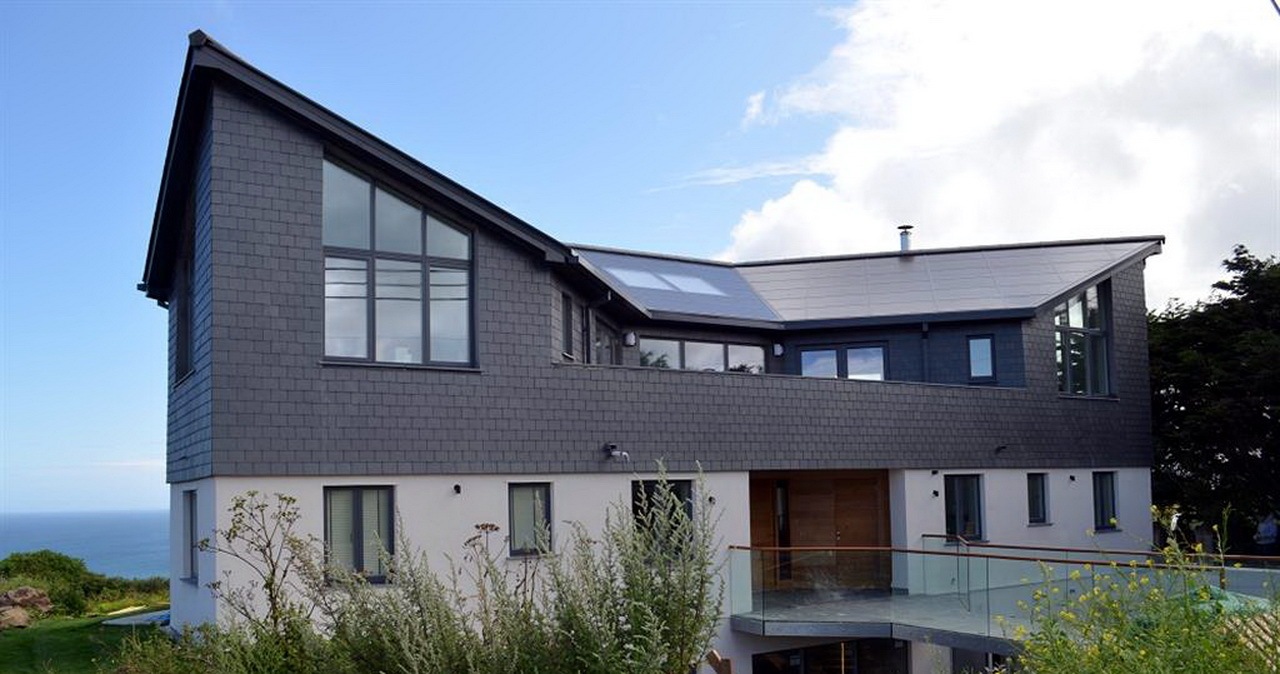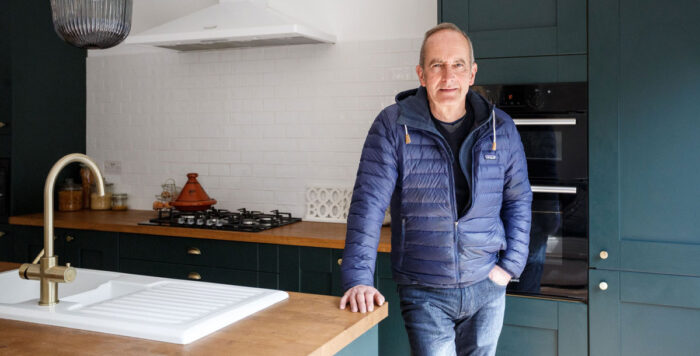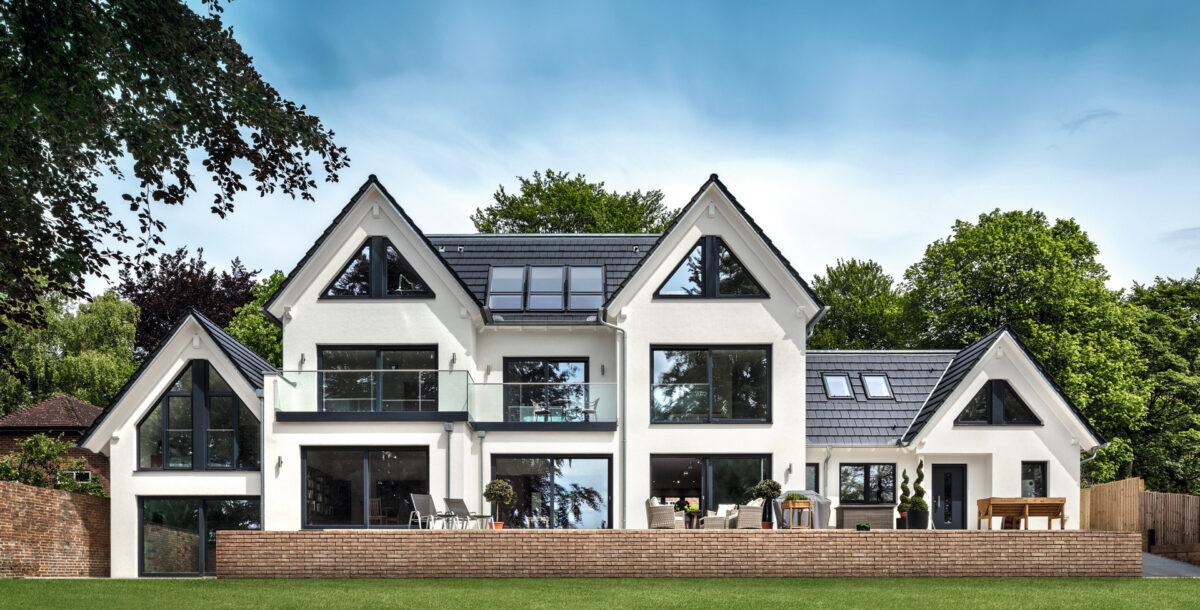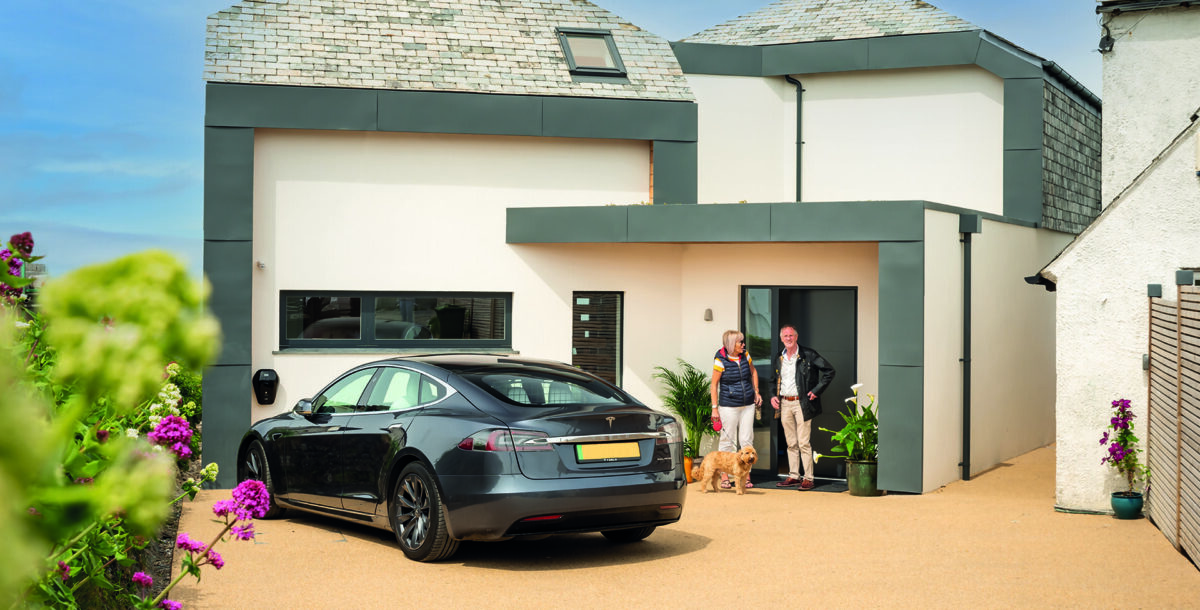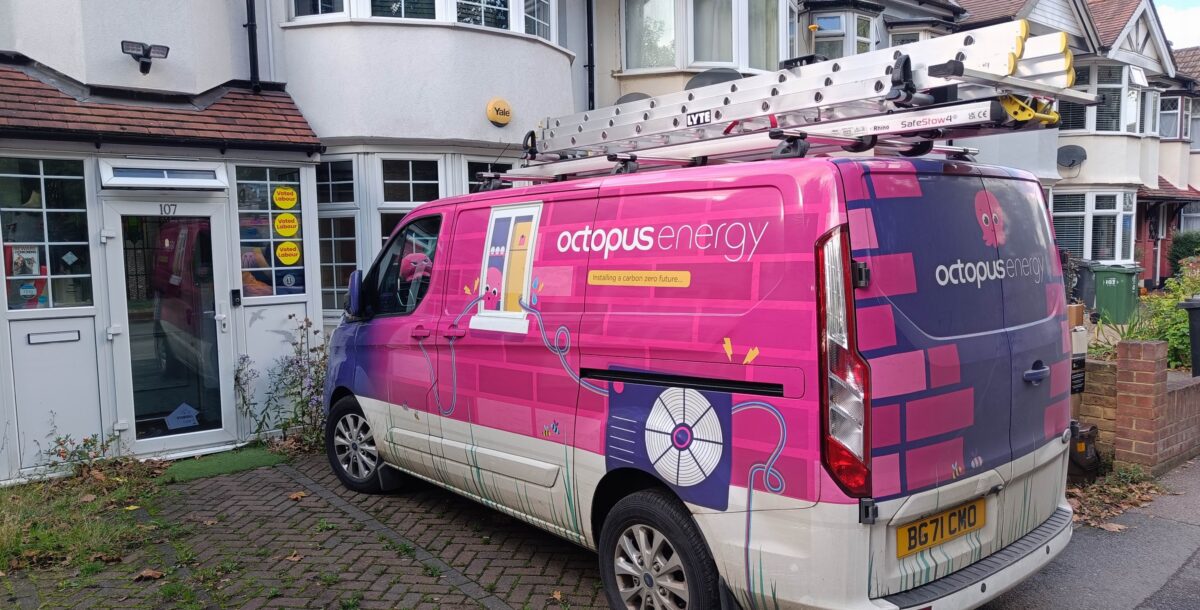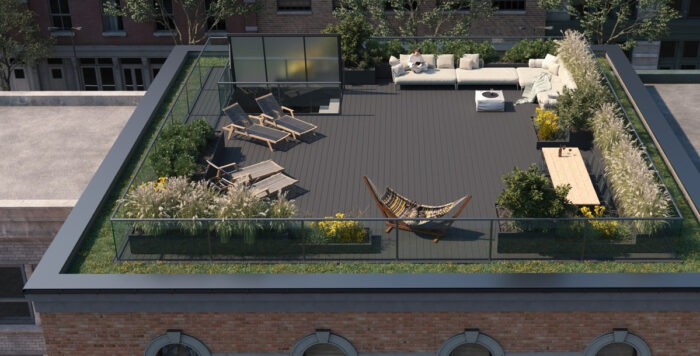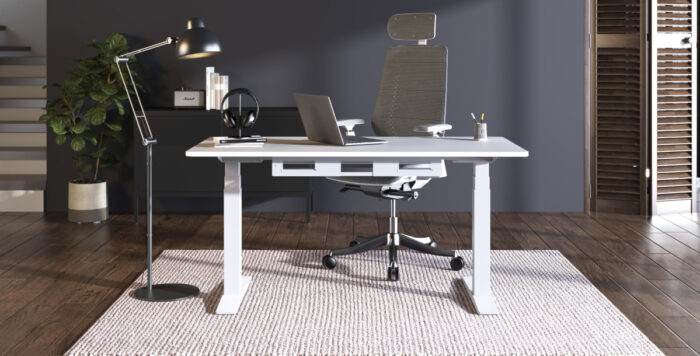Home Improvements, Renovate, Self Build, Sustainable Design
Solar panel alternatives
Rooftop solar isn’t always the best option, but there are great alternatives to traditional solar panels
Rooftop solar panels are a great way to generate free, clean electricity. They’re becoming a lot cheaper to install, require little maintenance, and can lower the carbon footprint of almost any property. But solar panels are big, heavy, and only at their best when they’ve got a clear view of the sun. If you’re in a shady spot, or if you’re restoring a property with a weak or otherwise unsuitable roof, you might not be able to take advantage.
Solar panels are also very visible, so they may not fit with the aesthetic of your build or renovation. Fortunately, you might be able to benefit from an increasing number of alternatives to conventional rooftop solar panels. From different mounting methods, through other solar roof coverings, to innovative products like solar blinds and fabrics, there may still be a way to harness the power of the sun.
When can’t you install solar?
Solar panels are ideal for many properties with flat roofs, or those that face roughly south, east or west. They work best in direct sunlight, at an angle of roughly 45 degrees, and ideally where they’re not shaded by trees, TV aerials or other buildings.
Photovoltaic (PV) cells produce much less power when they’re receiving diffuse light, for example on a cloudy day, or when they’re not pointing towards the sun. For this reason, they’re not usually installed facing north in the northern hemisphere, or south in the southern hemisphere. These requirements mean that not every roof has the suitable orientation.
Additionally, a typical solar panel weighs around 20kg and is subject to significant aerodynamic loads when the wind gets up. On an old or particularly exposed property, the roof might simply not be strong enough. You can’t put solar panels on a thatched roof at all, and you might not get permission to fit them to other listed buildings.
Even where none of the above apply, solar panels are a very visible presence on a building, and they don’t always look like they belong there. If you’re creating your dream home, you probably don’t want its solar installation to look like an afterthought. So what can you do if you want solar, but a standard rooftop installation isn’t suitable?
Solar roofs
From an design point of view, the neatest alternative is likely to be a solar roof, in which PV technology is built directly into the roof itself. Here, there are several options, with the most straightforward being integrated solar panels. These take the place of tiles or other roof coverings, with the panels themselves providing weatherproofing. And rather than sticking up on rails, the panels lie nearly flush with the remainder of the roof, so they look much less like an afterthought.
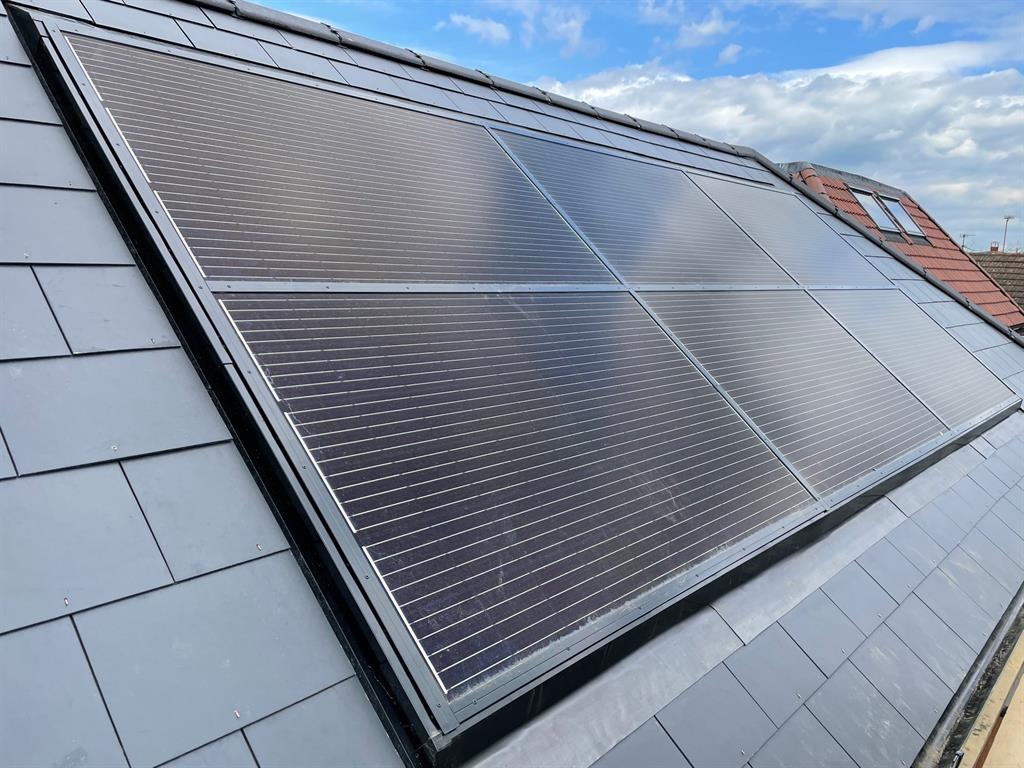
Image credit: GB-Sol
“We’ve always sought to make the roof from the solar panels, rather than do the uglier job of bolting the solar panels over the top,” explains Mark Candlish, director of integrated solar power manufacturer GB-Sol. “Our first integrated solar roof is 29 years old this year. We did the first one in the UK, and that’s still working today.”
It can be cheaper to add an integrated roof during roofing or refitting than to mount panels later over a completed roof. But while it is possible to retrofit an integrated solar system to a finished roof, doing so is more expensive than simply adding conventional panels on top of it.
You can achieve more effective solar installations by designing solar into the fabric of the roof from the outset. This is possible through modular systems such as Easy Roof Evolution, from French manufacturer Edilians, which allow you to cover almost the complete roof in panels. However, you can achieve more dynamic results using a bespoke system such as GB-Sol’s Infinity solar roofs, which create an almost seamless glass roof with ridge-to-gutter coverage.
“Roofs are never exactly eight solar panels wide, or four solar panels long,” says Mark Candlish. “Because we can custom make panels in our factory, we can adjust the glass size to give a really nice geometric fit across the width of the roof. You get really nice sharp lines detailing the building.”
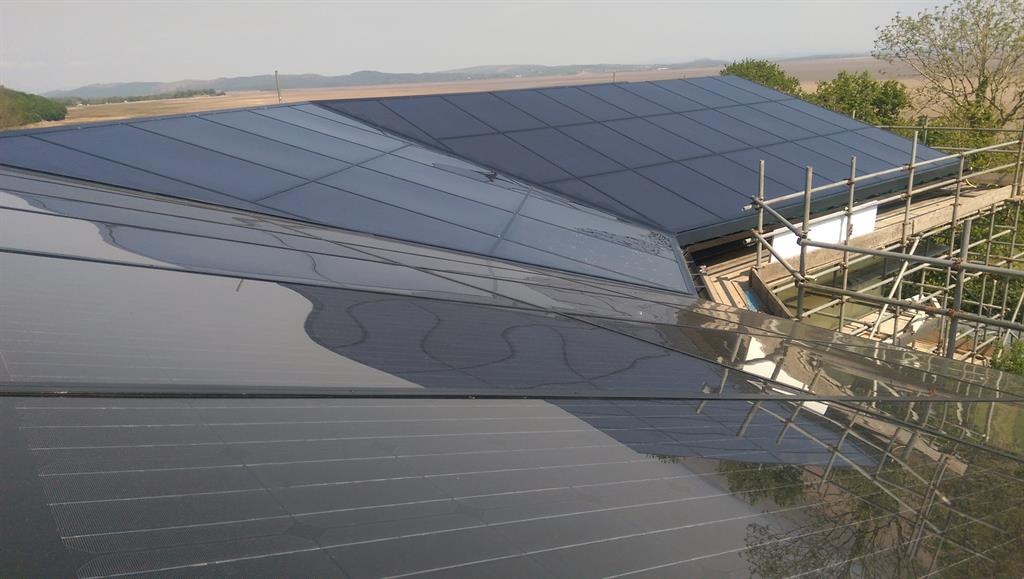
Image credit: GB-Sol
Apart from looking fantastic, full solar roofs can deliver significantly more electricity, as more of the available roof area can be used for generation. While a conventional install is limited to rectangular panels, which can’t be placed closer than 200mm to the edge of the roof, GB-Sol’s solution can be tailored to go into valleys and other features, potentially adding several square metres of PV surface area.
However, even a bespoke solar roof may be out of keeping with some properties, and it’s unlikely you’d be given planning permission to install one on a listed building. Here, it might be possible to install solar slates instead. These are small solar panels, designed to look exactly like a cluster of natural slates. They fix onto the batons of the roof in the same way as slates, and can be used alongside matching non-solar slates and ridge tiles to create a traditional looking roof, that’s also a power station.
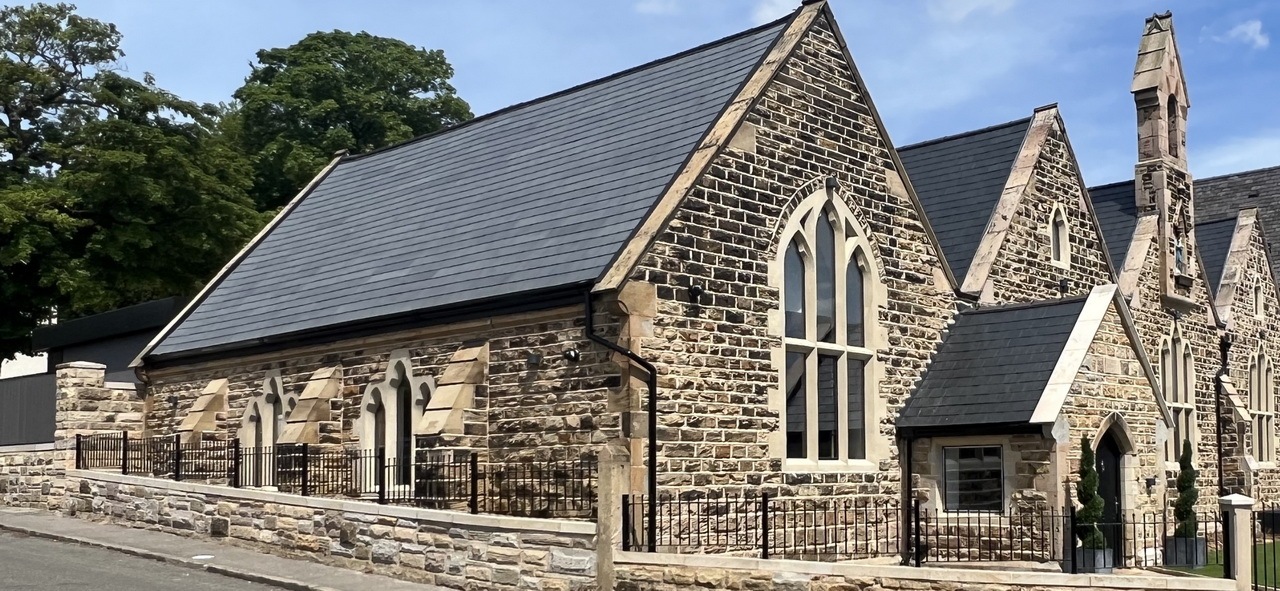
Image Credit: GB-Sol
There’s a growing range of solar tiles. When looking to build the UK’s first certified Passivhaus Premium house, Liz and Duncan sourced glass and metal solar roof tiles.
One potential disadvantage shared by all rooftop PV installations is that in summer, the panels can be exposed to very hot temperatures up to around 60°C. Photovoltaic cells become less efficient with heat, so this does result in a lower overall output. Rail-mounted panels actually have a small advantage here, as the open space beneath them allows a little more ventilation, and lowers their maximum temperature.
Alternative ways to mount panels
When a roof just isn’t suitable for solar, there may be other places to put conventional panels. It’s easy to use a frame system to mount PV panels on a wall, for example. Wall-mounting has the advantage that you can use your solar installation to shade large areas of glazing, particularly if it’s facing south. Fixed at the right height above any windows, panels will act as a canopy – reducing solar heating in the summer, but allowing it in the colder months when the sun is lower in the sky
Wall mounting won’t be right for every property, as it’s very visible. It also depends on the walls being suitably strong. A further restriction applies in conservation areas, where you can’t mount solar panels on any wall that fronts onto a highway.
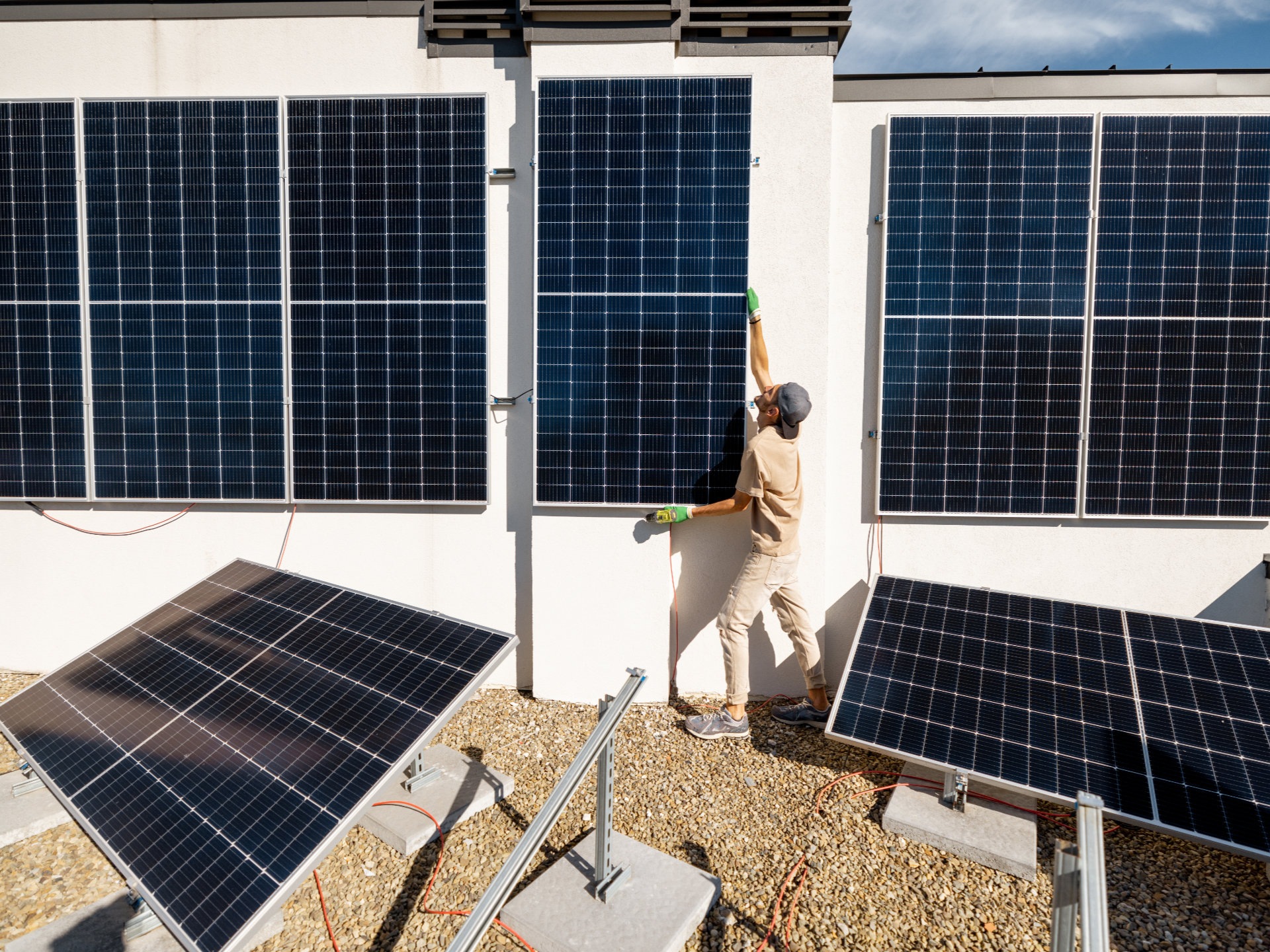
For properties with reasonable grounds, a land-mounting system could be a good alternative. These use either a pole or a frame, anchored into the ground, to mount a solar array. Because they’re independent of your roof aspect, they can be installed facing in the optimal direction for year-round generation. These kind of solar panels were used in the Liskeard flour mill that appeared on Grand Designs.
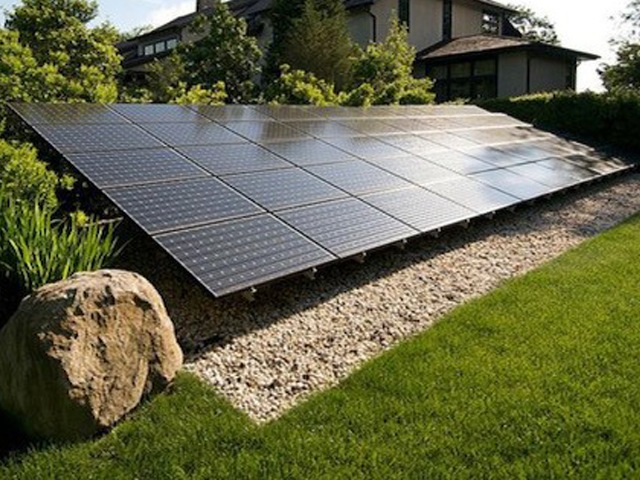
Ground-mounted solar panels. Photo: Solar Thermal UK
Some ground frames, such as the Cornish Rocker, can also be adjusted for vertical angle. This allows the panels to face up during the summer, and tilt to around 60 degrees to face the lower sun in the winter. According to Cornish Rocker manufacturer, Solar Frames South West, this means that panels can generate up to 40% more wintertime electricity when compared to fixed roof mounting.
Ground mounting may have another benefit during the summer. Photovoltaic cells remain cooler when mounted above grass, with air circulating below, so they may generate a little more electricity. However, one disadvantage of ground-mounting is that you’ll need planning permission for installations greater than nine square metres (equivalent to about 4.5 large solar panels, or an output of roughly 1,800 watts).
Solar sheds
If you’re set on having conventional solar panels, one final alternative is to mount them on an outbuilding, such as a garden office or garage. A large building with enough room for a significant installation could make a big contribution towards your overall energy use.
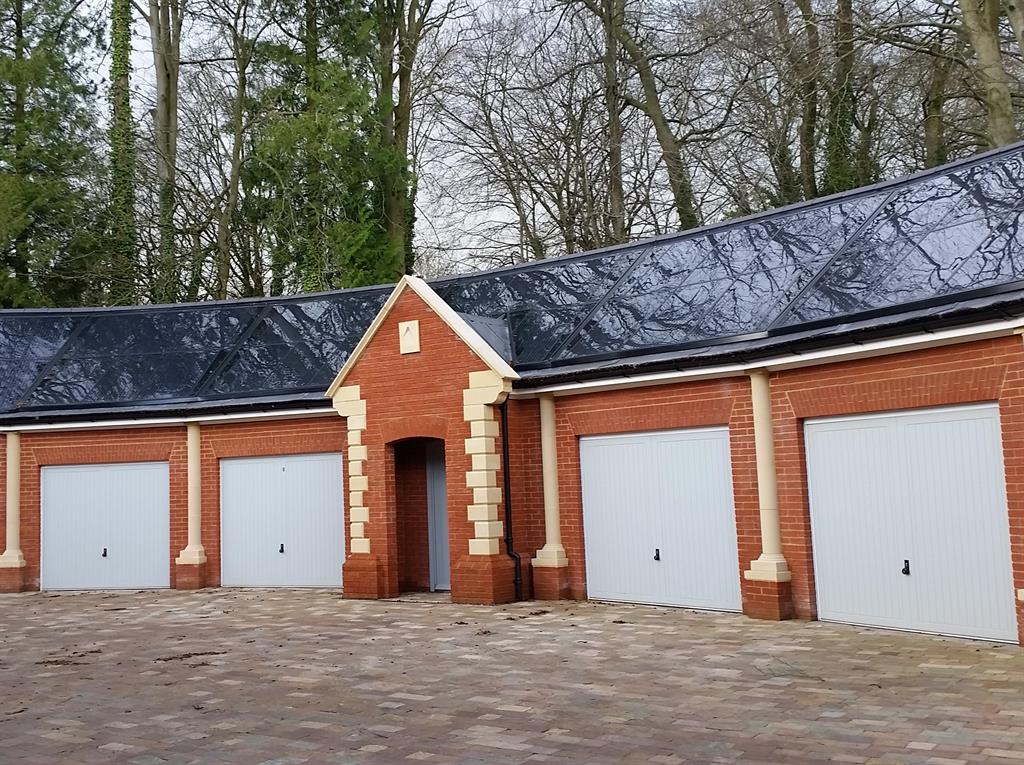
Image Credit: GB-Sol
Alternatively, you could use a couple of panels to take a smaller building, such as a shed off-grid. It’s becoming easier to achieve this, thanks to the rise of portable battery power stations. These combine battery storage with mains and direct current outputs, and many of them can be recharged from fixed or portable solar panels. As an example, the Anker SOLIX F2000 accepts up to 1,000W of solar input, and can store up to two kilowatt hours of electricity – roughly enough to boil the water for 60 cups of tea. More practically, you could use a similar power station to run a garden office.
Other structures might be suitable for solar, either as a retrofit, or as a bespoke build. Solar car ports can provide a significant amount of power, which can feed into the home or be used to charge an electric vehicle. Similarly, you can use a solar awning or canopy to provide both shade to a patio or garden, and power to a building or outbuilding.
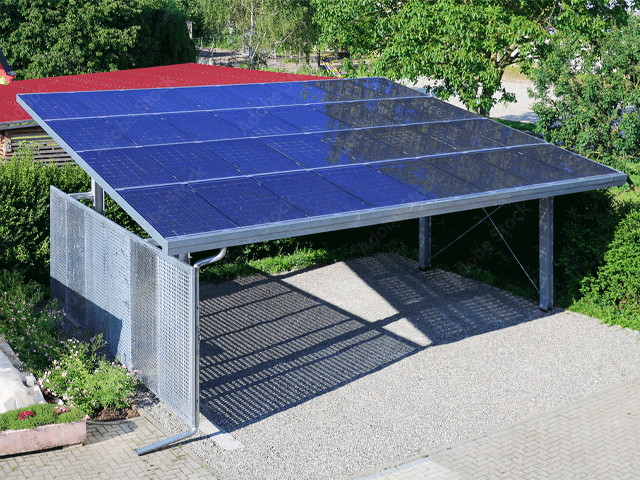
A residential solar carport. Photo: Marina Lohrbach/Adobe
Where you are using the space below a solar installation, using frameless glass modules will allow a proportion of light through to the space below, providing dappled shade.
Solar alternatives
Some properties just aren’t suitable for conventional solar panels, but even here there may be alternative ways to harness energy from the sun. You can shade sun-facing windows with solar blinds, such as SolarGaps. These external blinds are built from individual photovoltaic slats, and they can produce a claimed 100W per square metre.
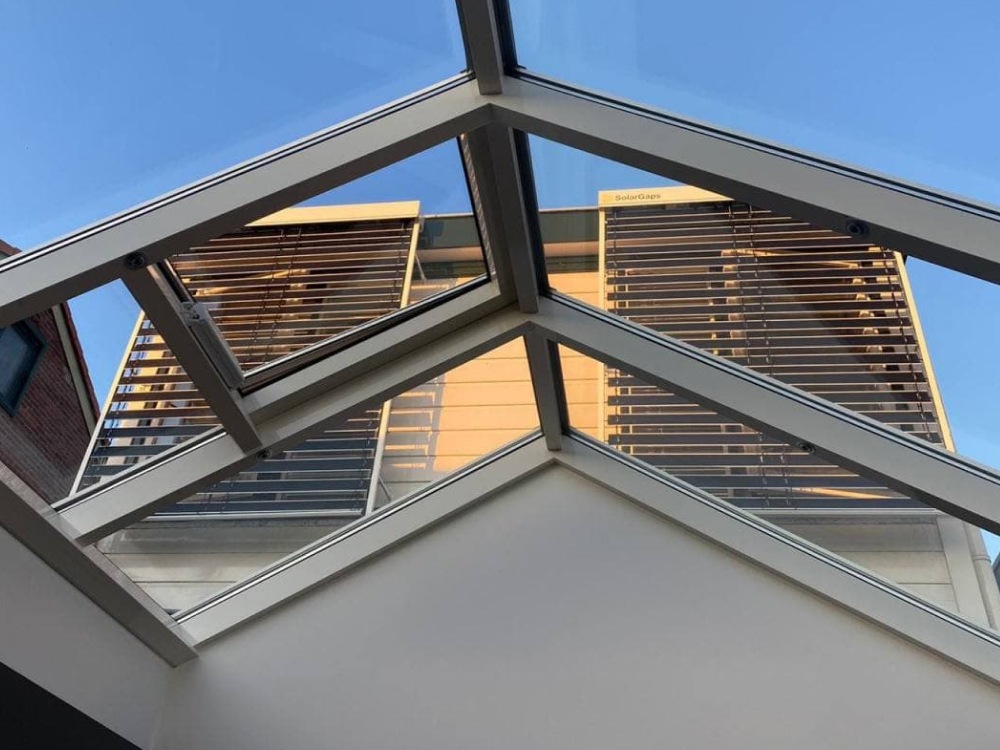
Image Credit: SolarGaps
If you own an apartment, you may be able to benefit from a balcony solar system. These combine smaller PV panels with balcony fixings and, typically, a micro-inverter which converts their output into usable electricity. Like a full solar install, a balcony system can often be enhanced with battery storage. Alternatively, a portable solar generator combines portable solar panels with a battery power station, giving you a source of solar power that can be moved wherever it’s needed.
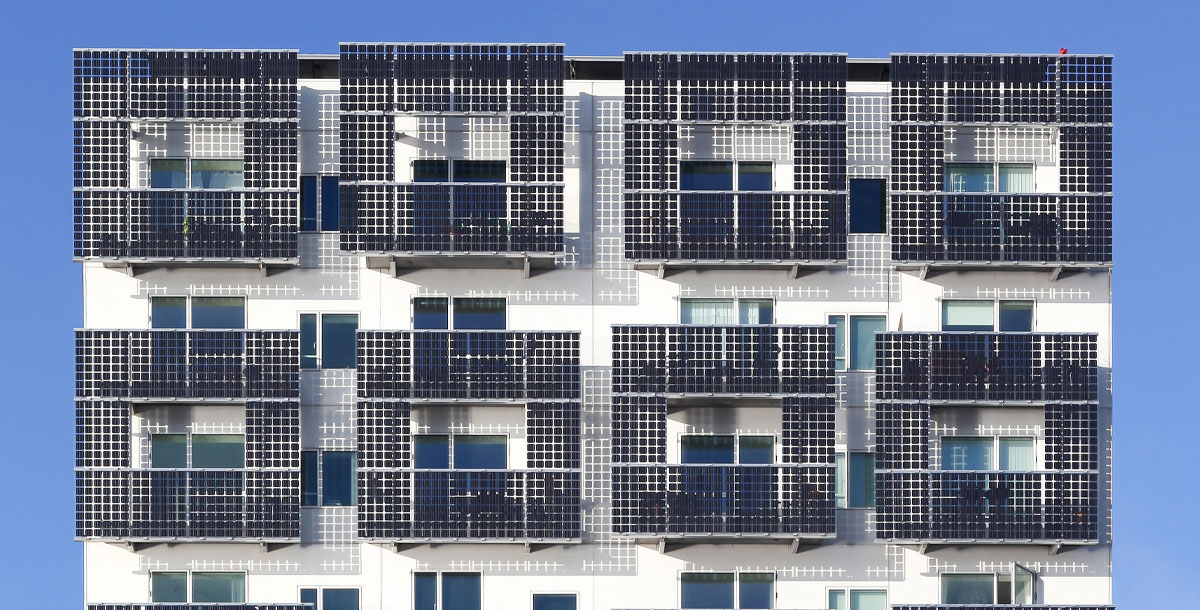
New technology promises to let us all use solar power in more flexible ways – literally. Solar fabrics, still a relatively niche product, weave photovoltaic cells into flexible films that can be used in new applications. Solar fabrics have the advantage that they can, in theory, be used for everyday objects, but they can also be glued to rigid surfaces, removing the need for the heavy glass and metal frames used by conventional panels. For designers and architects, this is likely to mean more freedom, and more ways to integrate solar into devices, buildings, and the rest of the built environment.
There are more alternatives where PV simply isn’t an option, or if you want to supplement a PV system in some other way. If sunshine isn’t the problem, you could top off a roof with a solar hot water system, for example. While most systems involve obvious panels, Thermoslate solar slate collectors are concealed below natural slate, so they may be suitable where a traditional appearance is important.
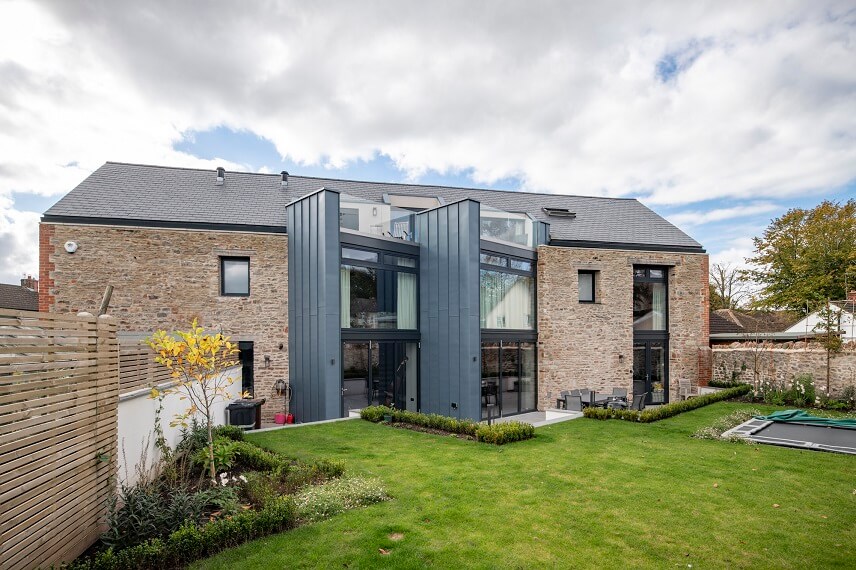
Image Credit: Cupa Pizarras
You might also look to other forms of microgeneration, such as a small wind turbine. While these can be unsightly, and in many cases they’ll require planning permission, they can contribute a meaningful amount of renewable energy – especially when installed in exposed locations.
If all else fails, there are other ways to lower your carbon footprint, and benefit from renewable electricity.
“There’s nothing wrong with someone building a communal wind turbine, or funding a wind turbine somewhere that’s windy,” says Mark Candlish.
“Putting solar on your own roof is not the only way to renewably power your house. But it is a very good one, and a lot of people are very passionate about it because it gives you such a great feeling of independence.”

